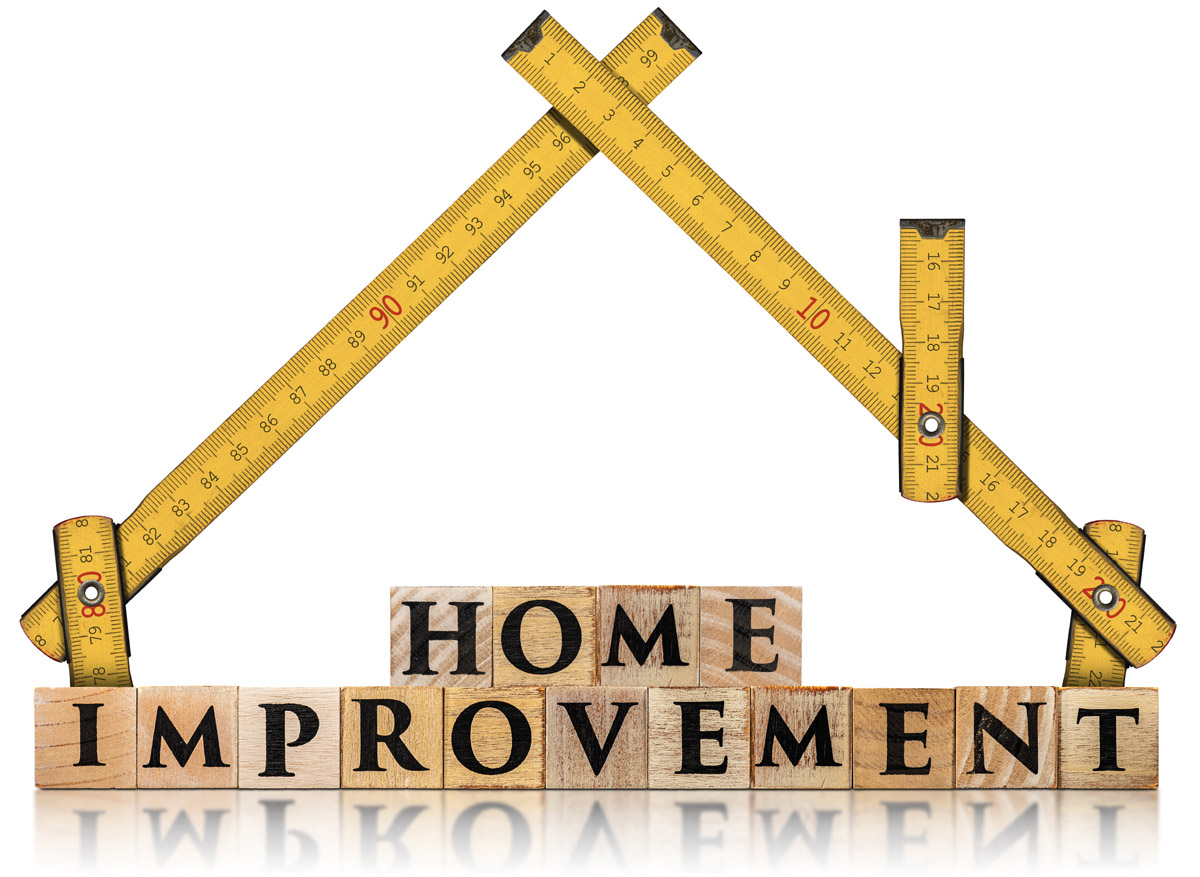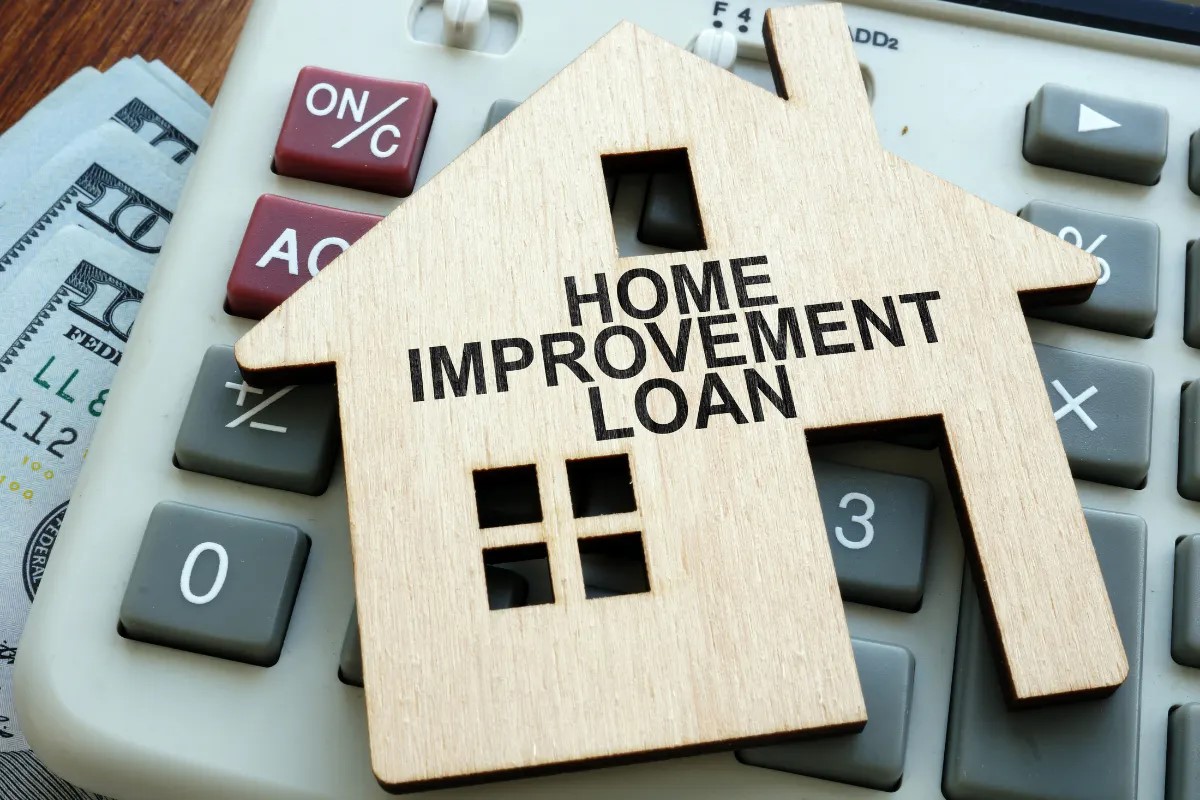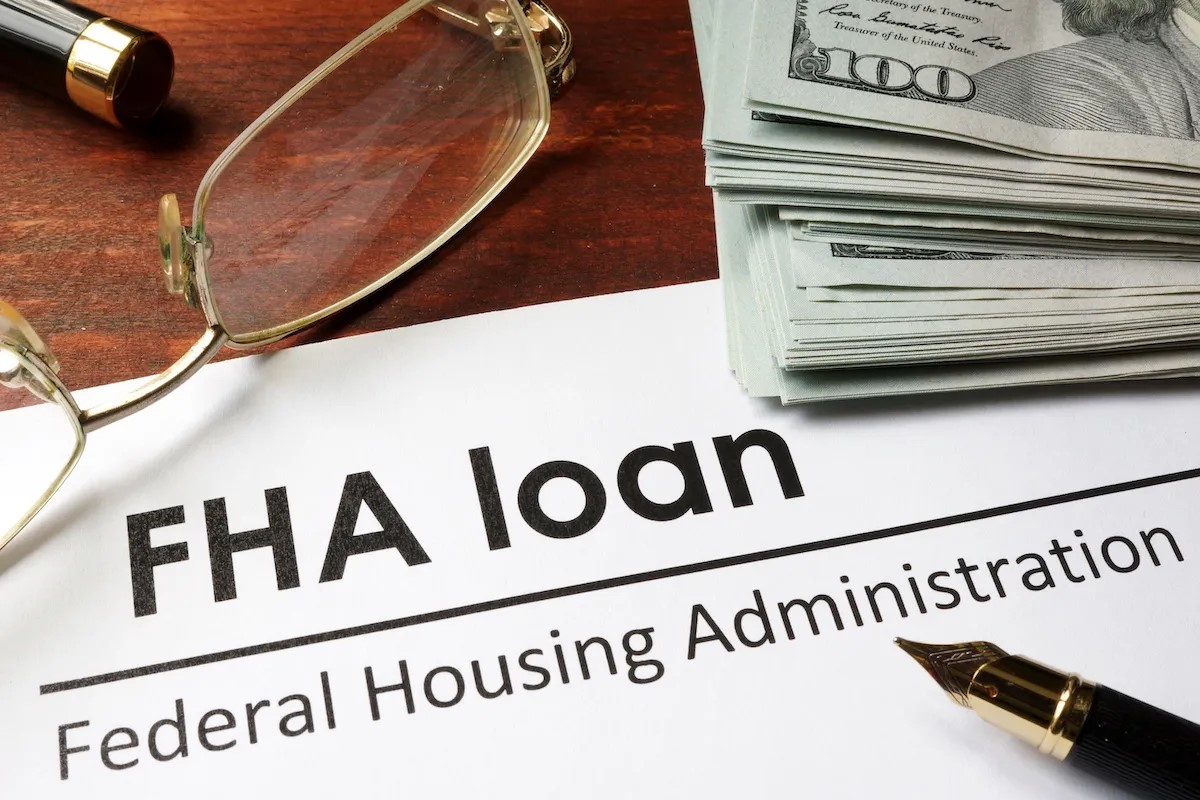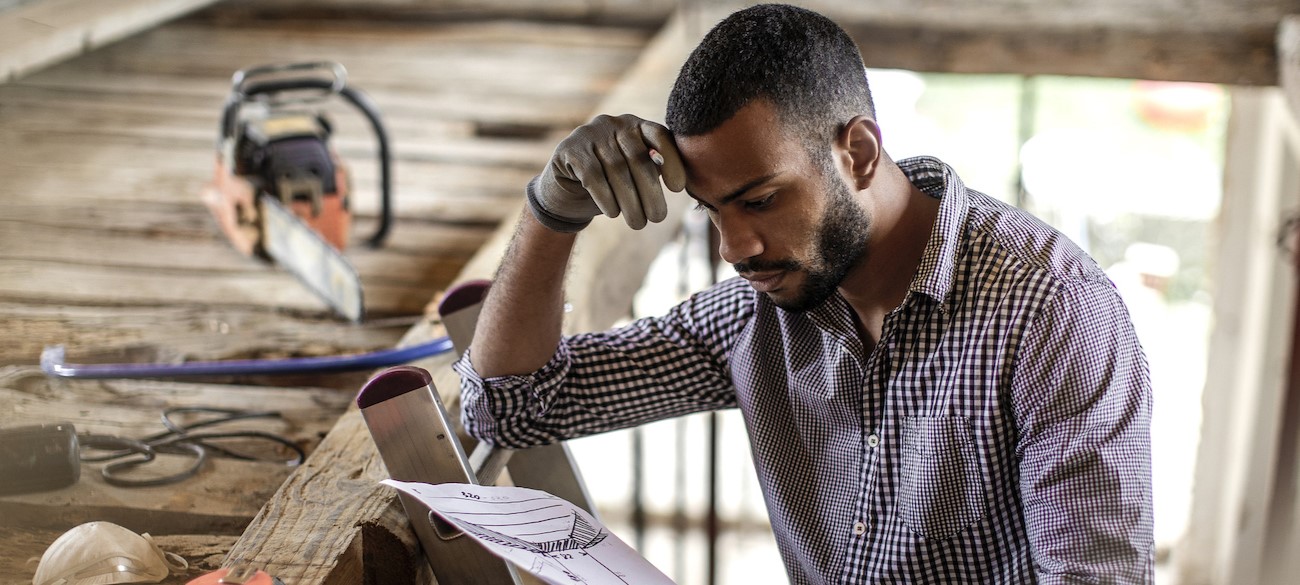Home>Renovation & DIY>Home Renovation Guides>How To Get A Home Improvement Loan With Poor Credit


Home Renovation Guides
How To Get A Home Improvement Loan With Poor Credit
Modified: January 9, 2024
Learn how to secure a home improvement loan with poor credit using our comprehensive home renovation guides. Get the financing you need to upgrade your home today!
(Many of the links in this article redirect to a specific reviewed product. Your purchase of these products through affiliate links helps to generate commission for Storables.com, at no extra cost. Learn more)
Introduction
Are you dreaming of transforming your living space but feeling discouraged by the state of your credit score? The good news is that obtaining a home improvement loan with poor credit is not an impossible feat. Whether you're looking to renovate your kitchen, add a new bathroom, or enhance your home's energy efficiency, there are viable financing options available to make your vision a reality.
In this comprehensive guide, we will explore the world of home improvement loans, focusing on how individuals with less-than-ideal credit can secure the funding they need to revitalize their homes. From understanding the various loan options to improving your chances of approval, we'll cover the essential steps to empower you on your home improvement journey.
So, roll up your sleeves and get ready to delve into the realm of home renovations, armed with the knowledge to navigate the financial landscape and achieve your renovation goals, despite any credit obstacles in your path. Let's embark on this enlightening journey and discover the possibilities that await you in the realm of home improvement loans.
Key Takeaways:
- Don’t let poor credit stop you from renovating! Explore personal loans, HELOCs, and FHA Title I loans. Improve your chances by repairing credit, presenting a detailed plan, and considering a co-signer or collateral.
- Prepare, research, and strategize when applying for a home improvement loan with poor credit. Assess your credit report, determine your budget, and gather documentation to increase your chances of approval.
Understanding Home Improvement Loans
Home improvement loans are financial products designed to provide homeowners with the funds necessary to renovate, repair, or upgrade their properties. These loans offer a convenient way to finance projects that can enhance the value, comfort, and functionality of your home. Whether you’re considering a minor cosmetic makeover or a major structural overhaul, a home improvement loan can be a valuable tool in bringing your vision to life.
There are various types of home improvement loans available, each with its own set of features and eligibility requirements. The two primary categories of home improvement loans are secured and unsecured loans. Secured loans are backed by collateral, such as your home or other assets, and typically offer higher borrowing limits and lower interest rates. On the other hand, unsecured loans do not require collateral but may have stricter credit score and income requirements.
When it comes to home improvement projects, the loan amount can vary depending on the scope of the work. Whether you’re planning a small-scale renovation or a full-scale remodel, it’s essential to assess the total cost of the project, including materials, labor, permits, and any additional expenses that may arise.
Understanding the terms and conditions of home improvement loans is crucial for making informed decisions. Interest rates, repayment terms, and potential fees should all be carefully evaluated before committing to a loan. By grasping the intricacies of these financial products, you can effectively compare different loan options and select the one that best aligns with your needs and financial circumstances.
Now that we’ve laid the groundwork for comprehending home improvement loans, let’s delve into the specific options available for individuals seeking these loans with less-than-perfect credit.
Options for Home Improvement Loans with Poor Credit
Having poor credit doesn’t have to be a barrier to obtaining a home improvement loan. While traditional lenders may be more stringent in their credit requirements, there are alternative options specifically tailored to individuals with less-than-ideal credit scores.
1. Personal Loans: Personal loans can be a viable solution for funding home improvement projects, even with poor credit. These unsecured loans are not tied to any collateral and can provide the flexibility needed to tackle your renovation plans. While interest rates may be higher for individuals with poor credit, personal loans offer a streamlined application process and can provide funds relatively quickly.
2. Home Equity Line of Credit (HELOC): If you have equity in your home, a HELOC can be an accessible financing option for home improvements. With a HELOC, you can borrow against the equity in your home and use the funds for a wide range of expenses, including renovations. Since the loan is secured by your home, lenders may be more lenient in considering applicants with poor credit.
3. FHA Title I Property Improvement Loan: This government-backed loan program is designed specifically for home improvements and renovations. With more lenient credit requirements compared to traditional loans, the FHA Title I loan can be an attractive option for individuals with poor credit seeking to enhance their homes.
4. Credit Unions and Community Banks: These financial institutions may be more inclined to work with individuals with poor credit, offering personalized attention and a better chance of approval. By establishing a relationship with a credit union or community bank, you may find more flexible terms and a willingness to consider your overall financial situation beyond just your credit score.
5. Peer-to-Peer Lending: Peer-to-peer lending platforms connect borrowers with individual investors, often resulting in more lenient eligibility criteria. This alternative lending approach can provide opportunities for securing a home improvement loan, even with poor credit.
Exploring these options can open doors to securing the funding needed for your home improvement endeavors, despite any credit challenges you may face. Now, let’s delve into proactive steps you can take to enhance your chances of getting approved for a home improvement loan with poor credit.
Consider applying for a home improvement loan from a credit union or online lender that specializes in working with individuals with poor credit. These lenders may be more flexible in their approval process and offer better terms than traditional banks.
How to Improve Your Chances of Getting Approved
While poor credit may present obstacles when applying for a home improvement loan, there are proactive measures you can take to bolster your chances of approval. By demonstrating financial responsibility and addressing potential concerns, you can enhance your appeal as a loan candidate.
1. Credit Repair: Prioritize improving your credit score by addressing any outstanding debts, paying bills on time, and disputing any inaccuracies on your credit report. While this may not yield immediate results, taking steps to repair your credit can positively impact your loan eligibility in the long run.
2. Debt-to-Income Ratio: Lenders consider your debt-to-income ratio when evaluating your loan application. By reducing existing debts and increasing your income, you can improve this ratio, signaling to lenders that you are a less risky borrower despite your credit history.
3. Collateral or Co-Signer: Offering collateral or securing a co-signer with a strong credit history can strengthen your loan application. This provides additional assurance to the lender, potentially offsetting the impact of your poor credit.
4. Detailed Project Plan: Present a comprehensive plan for your home improvement project, including cost estimates, timelines, and potential increase in property value. A well-structured proposal can instill confidence in the lender regarding the purpose and potential return on investment of the loan.
5. Stable Employment and Income: Demonstrating stable employment and a consistent income history can bolster your application. Lenders are more likely to approve loans for individuals with reliable sources of income, as it indicates the ability to repay the loan despite credit challenges.
6. Shop Around: Explore multiple lenders and loan options to find the best fit for your needs. While traditional banks may have stricter credit requirements, alternative lenders and specialized loan programs may be more accommodating to individuals with poor credit.
By proactively addressing these factors, you can significantly improve your chances of securing a home improvement loan, even with poor credit. Now, let’s delve into the process of applying for a home improvement loan and the key considerations involved.
Applying for a Home Improvement Loan with Poor Credit
When applying for a home improvement loan with poor credit, thorough preparation and a strategic approach can make a substantial difference in the outcome of your application. Here’s a step-by-step guide to navigating the application process:
1. Assess Your Credit Report: Begin by obtaining a copy of your credit report and reviewing it for any errors or discrepancies. Addressing inaccuracies can potentially improve your credit score and bolster your loan application.
2. Determine Your Budget: Evaluate the total cost of your home improvement project and determine the amount of financing required. Having a clear understanding of your budget will guide your loan search and ensure that you borrow an amount that aligns with your needs.
3. Research Loan Options: Explore the various loan options available for individuals with poor credit, such as personal loans, FHA Title I loans, and HELOCs. Compare interest rates, terms, and eligibility criteria to identify the most suitable choice for your circumstances.
4. Gather Documentation: Prepare the necessary documentation, including proof of income, employment history, and any assets or collateral that may strengthen your application. Having these documents readily available can streamline the application process.
5. Prepare a Detailed Proposal: Craft a comprehensive proposal for your home improvement project, outlining the scope of work, estimated costs, and the potential impact on your home’s value. Presenting a well-defined plan can enhance your credibility as a loan applicant.
6. Submit Your Application: Apply for the chosen loan option, ensuring that you provide accurate and complete information. Be transparent about your credit history and any mitigating factors that may positively influence the lender’s decision.
7. Consider a Co-Signer or Collateral: If feasible, explore the option of securing a co-signer with good credit or offering collateral to strengthen your application. This can mitigate the impact of your poor credit and increase the likelihood of approval.
8. Review Loan Terms: Upon receiving loan offers, carefully review the terms, including interest rates, repayment schedules, and any associated fees. Ensure that you fully understand the obligations and implications of the loan before accepting an offer.
9. Proceed with Caution: Exercise caution when considering high-interest loans or predatory lending practices. While seeking financing with poor credit, be vigilant against unscrupulous lenders and carefully assess the terms and conditions of any loan offer.
By approaching the application process with diligence and a clear strategy, you can navigate the challenges of obtaining a home improvement loan with poor credit and increase your chances of securing the necessary funding for your renovation project.
Conclusion
Embarking on a home improvement journey, especially with poor credit, may initially seem daunting. However, armed with the right knowledge and approach, securing a home improvement loan is well within reach. By understanding the available loan options, taking proactive steps to enhance your eligibility, and navigating the application process strategically, you can overcome credit-related obstacles and bring your renovation aspirations to fruition.
It’s important to remember that while poor credit may pose challenges, it does not define your ability to transform your living space. With determination, careful planning, and informed decision-making, you can access the financial resources needed to revitalize your home and create a space that aligns with your vision.
As you venture into the realm of home improvement loans, remember that each step, from assessing your credit report to submitting your loan application, is an opportunity to demonstrate your commitment and preparedness. By approaching lenders with transparency, presenting a well-structured proposal, and exploring alternative financing avenues, you can position yourself as a capable and deserving candidate for a home improvement loan.
Ultimately, the journey toward securing a home improvement loan with poor credit is a testament to your resilience and determination to enhance your living environment. By leveraging the insights and strategies outlined in this guide, you can navigate the financial landscape with confidence, knowing that you are equipped to overcome credit-related hurdles and embark on your home renovation endeavors.
So, take the first step with optimism, armed with the knowledge that your credit history does not diminish your potential to create a home that reflects your aspirations. With the right approach and a clear vision, you can transform your living space, improve your quality of life, and lay the foundation for a brighter future within the walls of your cherished home.
Frequently Asked Questions about How To Get A Home Improvement Loan With Poor Credit
Was this page helpful?
At Storables.com, we guarantee accurate and reliable information. Our content, validated by Expert Board Contributors, is crafted following stringent Editorial Policies. We're committed to providing you with well-researched, expert-backed insights for all your informational needs.















0 thoughts on “How To Get A Home Improvement Loan With Poor Credit”